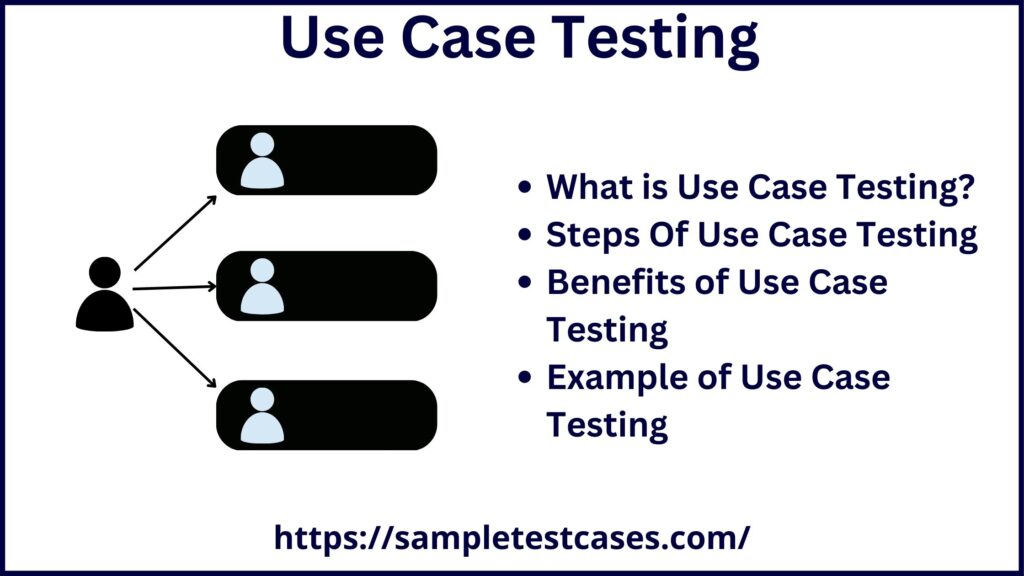What is Use Case Testing?
Definition : Use case testing is a software testing technique that focuses on verifying the system’s behavior against specific user scenarios or use cases. It involves testing the system’s functionality by creating test cases based on user scenarios and testing how well the system handles those scenarios.
Steps Of Use Case Testing
Identify the use cases: The first step in use case testing is to identify the different user scenarios or use cases that the system is designed to handle. Use cases represent specific user interactions with the system, such as placing an order, registering a new account, or searching for a product.
Create test cases: Once the use cases have been identified, test cases are created to validate the system’s behavior for each use case. Each test case includes the steps that the user takes, the expected results, and the actual results.
Execute the test cases: The next step is to execute the test cases and observe the system’s behavior. Testers will perform the actions specified in the test cases and verify that the system behaves as expected.
Document the results: After executing the test cases, the results are documented, and any defects or issues are reported to the development team for resolution.
Benefits of Use Case Testing
Ensuring that the system meets user requirements: It helps to ensure that the system behaves correctly in response to user scenarios, ensuring that it meets the user’s requirements.
Improving user satisfaction: It helps to identify and address issues that could negatively impact the user’s experience, improving user satisfaction with the system.
Catching defects early: It helps to identify defects early in the development process, reducing the likelihood of more significant issues occurring later on.
Simplifying test design: It simplifies test design by focusing on specific user scenarios, making it easier to create effective test cases.
Use Case Testing Example
Registration:
In this scenario, the user tries to register a new account on the system. Positive testing involves verifying that the user can successfully create an account with valid inputs, such as a valid email address and password. Negative testing involves testing the system’s behavior when the user provides invalid inputs, such as an invalid email address or password. Exception testing involves testing the system’s behavior when unexpected events occur, such as a network failure during the registration process.
Shopping Cart:
In this scenario, the user adds items to their shopping cart and checks out. Positive testing involves verifying that the user can successfully add items to their shopping cart and complete the checkout process. Negative testing involves testing the system’s behavior when the user tries to add an invalid or out-of-stock item to their cart. Exception testing involves testing the system’s behavior when unexpected events occur, such as a system crash during the checkout process.
Search:
In this scenario, the user searches for a product on the system. Positive testing involves verifying that the user can successfully search for a product and find the desired results. Negative testing involves testing the system’s behavior when the user enters an invalid search query or a query that returns no results. Exception testing involves testing the system’s behavior when unexpected events occur, such as a network failure during the search process.
Account Settings
In this scenario, the user updates their account settings, such as their name, email address, or password. Positive testing involves verifying that the user can successfully update their account settings with valid inputs. Negative testing involves testing the system’s behavior when the user provides invalid inputs, such as an invalid email address or password. Exception testing involves testing the system’s behavior when unexpected events occur, such as a network failure during the account settings update process.
Conclusion
In summary, use case testing is a valuable testing technique that helps to ensure that the system meets user requirements and provides a positive user experience. It involves testing the system’s behavior against specific user scenarios and documenting the results to identify and address any issues.
11.Unit Testing
